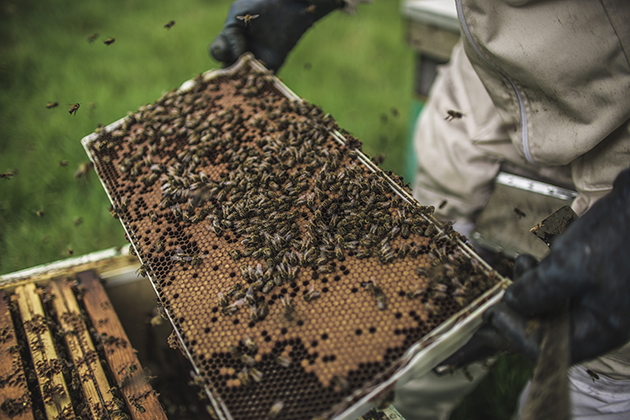Gamekeepers and beekeepers work together on moorland heather
Gamekeepers and beekeepers have formed a unique partnership for the benefit of moorland heather and local honey producers.

A new film explores how Scottish grouse estates are supporting local businesses, by teaming up with honey producers to give bees access to managed heather.
Estates in Tayside, the Angus Glens and the Lammermuirs work with beekeepers who put their hives on the moors every August and September. The bees feed on the heather and pollinate it in turn. This successful partnership is explored in a short film, A Bee’s Life on the Moor, which has been commissioned by the Tomatin Moorland Group to show how local estates and honey producer Struan Apiaries work together.
Heather is perfect for honeybees
Nigel Robertson of Struan Apiaries, which has 500 hives feeding on the heather at several estates in Tomatin, said the use of the moorland is crucial for his business: “Managed heather is perfect for honeybees — young heather is great for them to forage on as the flowers are soft and don’t damage their wings.
“A well-looked-after grouse moor is an ideal territory for bees. Heather honey is my best-selling product. I wouldn’t get the kind of crop that I do if I didn’t have access to a managed grouse moor, because there wouldn’t be the same percentage of young heather as a guaranteed source of food. Our business wouldn’t survive.”
Muirburn helps them thrive
Calum Kippen, a keeper at Clune & Corrybrough estate, added: “Our land is managed mainly for grouse. Heather needs to be burned regularly to kill off the old plants and encourage new growth. Muirburn provides a favourable habitat for grouse and other ground-nesting birds. The bees also thrive on young heather.
“There are 13 different species of bumblebee on Scottish moors, separate to the honeybees. Seven of these are common types and there are five or six scarce species; most of the common species live happily on moorland in Scotland.
Bees undisturbed on managed heather moorland
“Wild bees feed on the cowberry initially in June; then blaeberry flowers and bell heather, then the ling or common heather in August and September,” he explained. “The heather has to be pollinated and managed moors are great for bees to feed undisturbed.
“Some of the estates in Tomatin have hosted hives on their land for the past 25 years and it adds another layer of biodiversity to the work that we do. We are delighted to work in partnership with local honey producers and it is exciting from our point of view that we can play a small role in creating a Scottish food product that is in demand around the world.”








